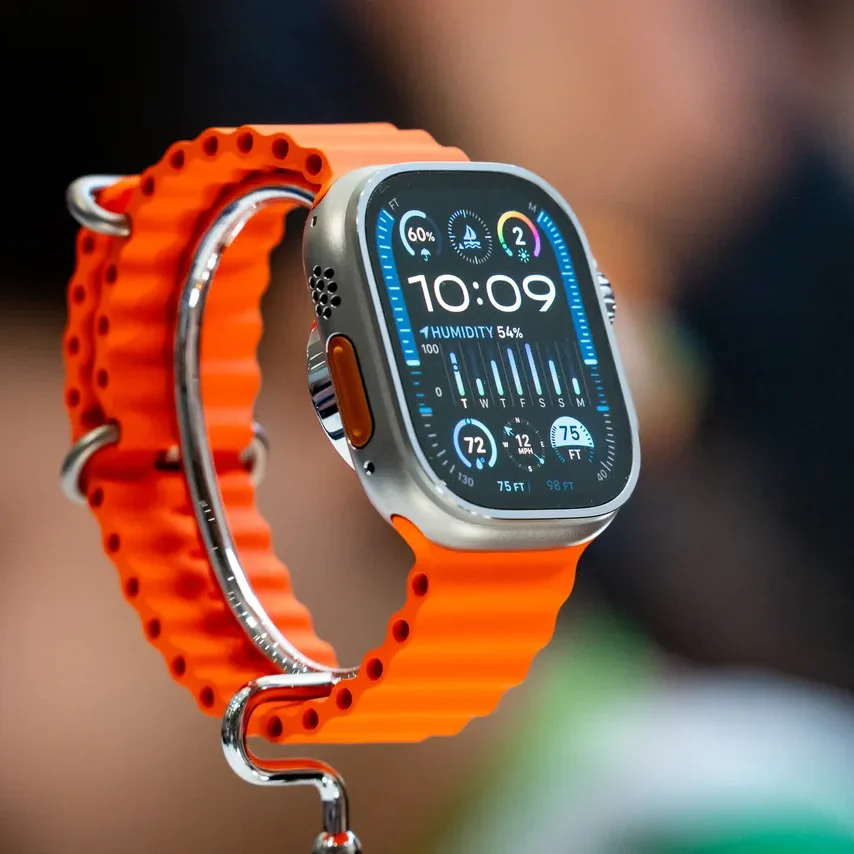Ray-Ban Meta Smart Glasses vs Original “Stories”
Smart glasses with cameras have been around for about 4 years now, and they’re finally beginning to get popular. So let’s dig into the pros, cons, and interesting features of the most popular smart glasses offered by Meta, Facebook and Instagram’s owner to see if smart glasses meet the hype.
2023’s Ray-Ban Meta smart glasses marked a significant upgrade from their 2021 predecessor, the Ray-Ban Stories, boasting a host of enhanced features centered around artificial intelligence, superior camera quality, and improved audio. While both generations maintain the iconic Ray-Ban design, the internal technology and user experience have been substantially revamped.
We have both Stories and Metas. My Stories still function primarily as cameras and speakers, but you have to wonder how long Meta will support these.
A key differentiator is the integration of Meta AI into the newer Metas, a more advanced and interactive voice assistant. This allows users to engage in more natural and complex conversations, ask questions, and even get real-time information, a feature largely absent in the more basic voice commands of the Ray-Ban Stories.
First, let’s address the elephant in the room. Yes, you will need a Meta (Facebook) account to activate your glasses. If that’s against your religion or beliefs, no major worries, because you’ll never really need to talk with Facebook again once your glasses are activated. The Meta app does use your Facebook login to activate, but after that, I haven’t noticed any real integration between the Meta app and Facebook itself.
And, yes, you can set your privacy settings so your photos, videos, and oral requests are theoretically not shared with or stored on Meta servers. I have not read the entire user agreement, but it’s there for your perusal if you need it. Personally, I have nothing to hide. But if you’re into nefarious shiznit, you might want to look into this.
The camera system has received a major overhaul. The Ray-Ban Meta glasses feature a 12MP ultra-wide camera, a nice improvement from the original 5MP camera that’s on the Stories. This results in higher-resolution photos and the ability to capture 1080p videos, a noticeable improvement over the Stories’ 720p video capabilities.
Along with the still photo option, Meta’s video format is more of an ultrawide yet more square-ish 3:4 format to fit better with its Instagram platform, while Stories was a bit more landscape. When checking my video resolution in my video editing software, I find that although it’s always HD or better, the actual video resolution can vary. Meta glasses will not allow any user to set framing, exposure, resolution, zoom, or anything – it’s all some sort of AI control. Fortunately, it’s usually pretty on point.
In most cases, we’ve found it pretty easy to crop to a 16:9 format for YouTube, or to 9:16 for TikTok, and still get pretty good quality with most of my subject in frame. Both Stories and Meta feature processor-driven digital stabilization. When combined with the natural stabilization of your human head, the results are usually quite good. The digital stabilization cropping might explain the differences in video resolution.
Originally limited to 60 seconds of video capture, Meta’s latest firmware upgrades allow up to 3 minutes now. You can also stream live on Instagram using the glasses for as long as your connection or battery lasts. I’ve done 20 minute livestreams from the Bahamas with no trouble.
Videos must be shared from the glasses via the Meta View app and then imported to other platforms after transferring them from the glasses to a paired phone.
Audio performance has also been a focus of the upgrade. The Ray-Ban Meta glasses come with five built-in microphones, compared to the three in the Stories, enabling clearer voice calls and improved audio for videos. The open-ear speakers have also been enhanced to deliver better sound quality.
Under the hood, the Ray-Ban Meta is powered by a more robust processor, leading to faster performance and a smoother user experience. This increased processing power is crucial for handling the more demanding AI features and higher-resolution media. Storage capacity has also seen a significant jump, allowing users to store more photos and videos directly on the glasses.
In terms of design, while both models are available in the classic Wayfarer style, the Ray-Ban Meta collection offers a wider variety of frame styles and color options.
Privacy, a key consideration for camera-equipped glasses, has also been addressed. Both generations feature an LED light to indicate when the camera is recording. But the Meta light cannot be covered, and is significantly larger than that in Stories. Forget about being covert with Metas.
For those with reduced vision, Meta AI can provide detailed descriptions about the world around you or connect you with the Be My Eyes network, which offers assistance from sighted volunteers. That’s not available with Stories.
In essence, the Ray-Ban Meta smart glasses represent a significant evolution from the original Ray-Ban Stories. The integration of advanced AI, a superior camera, and enhanced audio capabilities position them as a more powerful and versatile smart wearable, moving beyond simple photo and video capture to a more interactive and connected experience.
Oakley HSTN Meta vs. Ray-Ban Meta
And now, Meta and Oakley are collaborating to deliver a brand-new category of Performance AI glasses. Oakley Meta glasses are a new product line that will combine Oakley’s signature design DNA with Meta’s industry-leading technology. Oakley Meta HSTN (pronounced HOW-stuhn, for some weird reason), based on the namesake Oakley glasses, like Ray-Ban Meta, are capable of capturing video hands-free with a built-in 12MP camera. And like Stories and Meta, open-ear speakers are integrated into the frames.
Oakley Meta HSTN offers some attractive upgrades:
- Oakley Meta HSTN glasses promise up to eight hours of typical use and up to 19 hours standby. You can charge them up to 50% in just 20 minutes.
- HSTN glasses also come with a charging case that can deliver up to 48 hours of charging on the go.
- Higher resolution Ultra HD (3K) video.
| Feature | Ray-Ban Stories | Ray-Ban Meta (Wayfarer) | Oakley Meta (HSTN) |
| AI Assistant | Basic Voice Commands (Facebook Assistant) | Advanced Meta AI | Advanced Meta AI |
| Camera | Dual 5MP | 12MP ultra-wide | 12MP ultra-wide |
| Image Resolution | 2592 x 1944 pixels | 3024 x 4032 pixels | 3024 x 4032 pixels |
| Video Resolution | 1184 x 1184 @ 30fps | 1440 x 1920 (may be higher with image stabilization) @ 30fps | Up to 3K resolution (1620 x 3072 pixels with image stabilization) |
| Microphones | 3-mic array | 5-mic array | 5-mic array |
| Processor | Qualcomm Snapdragon | Qualcomm Snapdragon AR1 Gen 1 | Qualcomm Snapdragon AR1 Gen 1 |
| Storage | 4GB | 32GB (100+ 30s videos or 500+ photos) | 32GB (unclear how many videos at 3K) |
| Design Options | 3 styles (Wayfarer, Round, Meteor) | Multiple styles and combinations | Currently one style (HSTN) |
| Frame | Squareish | Squareish | Roundish |
| Color | Multiple options | Matte Black, Shiny Black, and others | Warm Grey (Whiteish) |
| Lens color | Multiple options | Green, Clear, Transitions, and more | Prizm 24K Polarized |
| Treatment | Non-polarized standard, polarized and transitions available | Transitions, Clear, and more | Polarized |
| Weight | ~48g | 49g (Standard), 51g (Large) | 49g |
| Speakers | 2 open-ear speakers | 2 open-ear Bluetooth speakers | 2 discreet open-ear speakers |
| Battery (glasses) | Up to 3 hours | Up to 4 hours | Up to 8 hours |
| Battery (charging case) | Up to 3 additional charges | Up to 36 hours of use | Up to 48 hours of use |
| Connectivity | Wi-Fi 802.11ac, Bluetooth 5.0 | Wi-Fi 6, Bluetooth 5.2 | Wi-Fi 6, Bluetooth 5.3 |
| Water Resistance | Not specified | IPX4 | IPX4 |
While both born from the same Meta AI-powered technology, the Oakley HSTN Meta and the Ray-Ban Meta smart glasses represent two distinct paths for the future of wearable tech. The choice between them boils down to a fundamental question of lifestyle and priorities: are you seeking a stylish, everyday companion or a rugged, performance-driven tool?
The Ray-Ban Meta continues its legacy of iconic, fashion-forward design. Available in the classic Wayfarer and other popular Ray-Ban styles, it seamlessly integrates smart technology into a familiar and widely accepted aesthetic.1 It’s the more discreet of the two, aimed at the general consumer who values style and wants to capture moments without sacrificing their look.
In stark contrast, the Oakley HSTN Meta is built for the active user. Its design is unapologetically sporty, featuring a more angular and robust frame constructed from durable, lightweight materials.
Both feature IPX4 water resistance rating, making them resilient to sweat, light rain, and minor water splashes from any direction. However, it’s important to understand the limitations of this rating:
- Not water-PROOF: The glasses are not designed to be submerged in water. You should not wear them while swimming, in the shower, or in heavy downpours.
- Avoid running water: Do not hold the glasses under a running faucet.
- Dry if wet: If your Ray-Ban Meta glasses do get wet, you should wipe them completely dry as soon as possible. Also, ensure the charging areas on the frame are clear of any moisture or debris before placing them back in the charging case.
The charging case itself is not water-resistant and should be kept away from liquids.
The divergence is most evident in their technical capabilities. While both share a 12MP ultra-wide camera for high-resolution photos and a five-microphone array for clear audio, the Oakley model boasts superior video capture. It records in 3K resolution, offering significantly sharper and more detailed footage compared to the Ray-Ban Meta’s 1080p video. This positions the Oakley HSTN Meta as a more capable device for content creators and those who want to document their adventures in higher resolution.
Both feature open-ear audio that lets you hear your surroundings while still enjoying private audio through the glasses. The speakers are positioned just above your ears, directing sound toward you without completely blocking out ambient noise. It’s perfect for staying aware of your environment while listening on the go. Audio from both models is directional and designed to be heard primarily by you. In quiet environments or at higher volumes, others nearby may hear faint sound, but it’s generally low-profile and not disruptive.
Battery life is another significant advantage for the Oakley HSTN Meta. It offers up to eight hours of typical use on a single charge, double the four hours provided by the Ray-Ban Meta. This extended longevity is a crucial factor for users who are out for long periods or rely on their glasses for continuous use.
Both smart glasses are powered by Meta AI, providing hands-free access to a voice assistant for calls, messages, music playback, and capturing photos and videos. The core software experience remains largely the same across both devices.
Both offer live stream capabilities (when connected to Instagram on a smartphone) up to 30 minutes. We’re hearing Oakley Metas might be longer.
In terms of lens technology, the Oakley HSTN Meta leverages Oakley’s renowned Prizm and Prizm Polarized lenses, which are engineered to enhance color and contrast for specific environments, a feature tailored to its athletic audience. Sadly, the first batch looks like it’s outdoor non-prescription sunglasses only, with no option for transitions.
But both Meta and EssilorLuxottica have confirmed that the new smart glasses are designed to accommodate prescription lenses. Eventually, you will likely be able to purchase them through authorized Oakley retailers and opticians who can fit them with Oakley Authentic Prescription lenses. These lenses are specifically designed to match the frame and your vision needs, and can often include advanced options like Oakley’s Prizm lens technology.
The trade-off for the Oakley’s enhanced durability, superior video quality, and longer battery life is a higher price point. The Oakley HSTN Meta comes with a premium price tag compared to the more accessibly priced Ray-Ban Meta, about $100 more.
Here is a breakdown of the key differences:
| Feature | Oakley HSTN Meta | Ray-Ban Meta |
| Design | Sporty, rugged, and angular | Classic, fashion-forward styles (e.g., Wayfarer) |
| Water Resistance | IPX4 (sweat and light rain resistant) | IPX4 (sweat and light rain resistant) |
| Video Resolution | 3K (100 degree field of view) | 1080p (FOV not specified) |
| Battery Life | Up to 8 hours of typical use | Up to 4 hours of typical use |
| Lens Technology | Oakley Prizm and Prizm Polarized options | Standard and polarized lens options |
| Target Audience | Athletes, active users, content creators | General consumers, fashion-conscious users |
| Price | $400-$500 | $300-$400 |
Ultimately, the decision rests on individual needs. For those who prioritize a classic look and casual use, the Ray-Ban Meta offers a stylish and capable package. However, for the active individual who demands superior video performance, and longer battery life, the Oakley HSTN Meta stands out as the more robust and feature-rich option.
We’ve pre-ordered our Oakley HSTN Metas, and will do a complete review and comparison against Ray-Ban Metas. Subscribe to our YouTube channel to get notified when that video goes live! https://www.youtube.com/@FreshandFelicia
Privacy Concerns
Before you run out to your local Sunglass Hut or Lenscrafters and pick up a pair of Metas or HSTNs and record everything that moves, there are a few things you need to be aware of. Now, I am not an attorney, and you should always consult a local, licensed attorney in the state you intend to work in before doing anything you intend to share, especially things you think might go viral, to avoid any potential legal trouble. The most important thing to know is that ignorance of these laws is never allowed as a defense, no matter how old you are or how much schooling you’ve had.
First, there are situations where you may not legally be able to record someone or something. You should look up your state’s wiretapping laws, specifically for consent. Basically, this means in some states, all parties to any recorded conversations must be aware that you’re recording, and also give you consent to record them. It’s best if that consent is in writing, but a video recorded consent might be admissible as well.
Fortunately, or unfortunately, Meta and HSTNs have a glaring white LED that lets people know you are recording video. You can’t obscure it or the glasses won’t record. Stories allowed people to put a piece of tape or Sharpie over the LED and they would still record, but Metas forward won’t let you do this. Theoretically, that blinking LED should let people know they’re being recorded, and proceeding while they can clearly see the blinking LED could be considered consent. But there hasn’t been a court case I’m aware of that has proven this, and I’m pretty sure you don’t want to be the one who racks up thousands of dollars in legal fees to set the precedent.
In other states, including my home state of Alabama, a one-party consent is all you need, meaning you, as a participant in a conversation in a public place where someone else could potentially overhear you, can record and share your recordings freely. But, remember, sharing certain statements could expose you to a defamation lawsuit, regardless of consent.
So, again, I am not an attorney, but I can advise you to be very careful before you share any recordings privately or on socials. That wild tale your drunk roommate told while you were recording might be hilarious, but it could get you into legal trouble down the road.
#raybanmeta #oakleymeta #smartglasses









